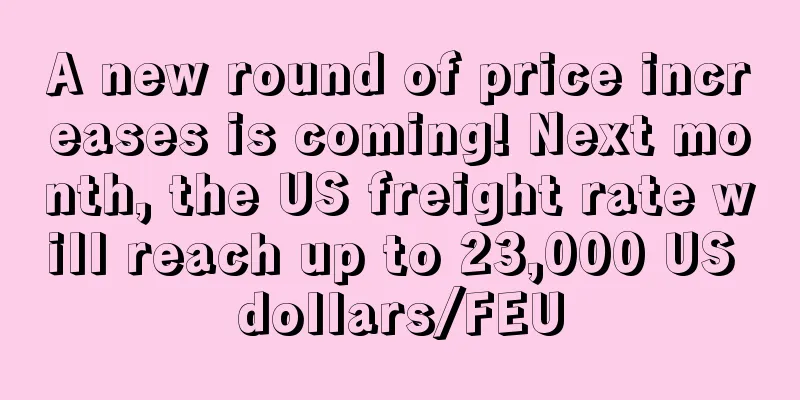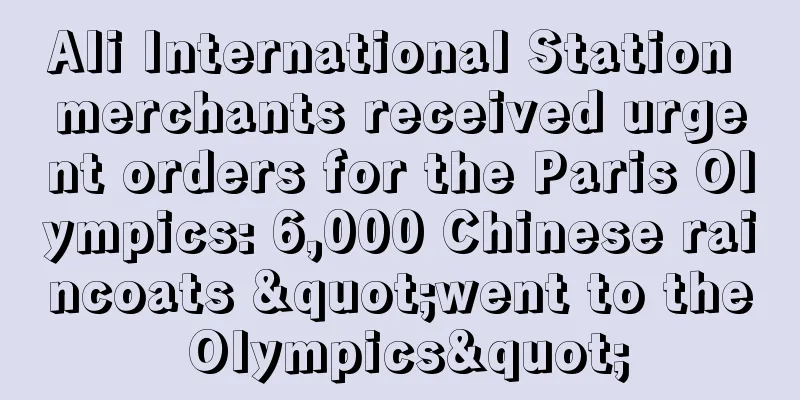A new round of price increases is coming! Next month, the US freight rate will reach up to 23,000 US dollars/FEU

|
The port is jammed! Jammed! Jammed! The cargo volume is increasing! Increasing! Increasing!
The more traffic there is, the more congestion there is. This is the current situation of the three major ports in the western United States! At present, the freight rates of major routes around the world, especially those of the US and Europe, have soared, but it is still in an awkward situation where it is difficult to find a container or a cabin, and there are also frequent problems such as overloaded cabins and abandoned containers!
Freight volume surge and port congestion go hand in hand
According to data released in May by US research company Descartes Datamyne , in April this year , the volume of seaborne container shipments from Asia to the United States increased by 32.1% year-on-year to 1,656,443 . The volume of shipments has increased for 10 consecutive months, setting a new record for the single-month April in previous years.
However, the three major ports in the western United States are still congested. The average waiting time for ships at the ports of Los Angeles and Long Beach is one to two weeks , while the waiting time at the Port of Oakland is even more exaggerated! The waiting time at the Port of Oakland has now been extended to three weeks , and Hapag-Lloyd has even announced that it will skip the port of Oakland.
The industry couldn't help but sigh that the congestion at the Port of Auckland has reached a new height and a new horizon ...
Demand is high, and the freight rate to the United States can reach up to $23,000
The relentless demand for ocean freight and the resulting delays and container shortages have seen spot rates on all major trade lanes hit new highs again in recent weeks.
According to the freight index of maritime analysis agency Drewry , the spot freight rate for a 40-foot container from Shanghai to Los Angeles soared to US$6,000/FEU in mid-April and continued to show an unstoppable upward trend, reaching US$6,358/FEU on Wednesday this week .
But this is just the spot freight rate. The actual cost that shippers will eventually pay is much more than this! After adding up the prices, the actual price on the West Coast is at least $11,000/FEU.
And this is far from the end of the increase in freight costs!
As congestion at ports in Asia and North America is nowhere in sight, the departure and arrival times of ships are further delayed , indirectly leading to a shortage of shipping capacity. Frequent bidding among shippers for space and containers, coupled with rising demand, has forced prices to rise further.
Maersk and Hapag-Lloyd have announced additional charges in the United States and Canada, which will take effect from next week.
According to industry insiders, freight rates on the eastbound trans-Pacific route will surge again next month. Although freight indices such as Drewry currently show that freight prices on the East Coast are around $8,000/FEU, the actual freight to be paid may be in the range of $11,000-20,000/FEU, and may rise to as high as $23,000/FEU.
However, it should be noted that even if you pay such high fees, you may still encounter the difficult situation of tight space and difficulty in finding a container! freight port logistics |
<<: Argentina - the fastest growing e-commerce country in the world
Recommend
Brazilian site accused of unfair competition, Meikeduo: Nonsense
Founded in Argentina in 1999, Makedo is the large...
What is Shangxian Technology? Shangxian Technology Review, Features
Shopline was founded in 2013. It not only allows ...
Sales volume reached 56,200 pieces! A product on Amazon was urgently removed from the shelves
In the past two years, due to the influence of th...
What is StoreFeeder? StoreFeeder Review, Features
StoreFeeder is a complete order and shipping manag...
What is Qianya International? Qianya International Review, Features
Qianya International (Shanghai Qianya Internation...
Target offers $24 an hour due to labor shortage
According to foreign media reports, workers in Ta...
Rail freight in the United States is congested, with containers stranded for an average of 9.8 days!
Recently, due to serious congestion in ports such...
What is Modalku? Modalku Review, Features
Modalku is a P2P online lending platform that focu...
What is HONBAY? HONBAY Review, Features
HONBAY's new sofas come in a wide variety of ...
Over 160,000 domestically produced children's water cups recalled due to suffocation risk
Product recalls are not uncommon, and the childre...
Tmall Taobao's "No. 1 Dedicated Line" is in trial operation, providing one-to-one service for merchants' daily operations
Recently, reporters learned from some merchants t...
What is SHOPYY? SHOPYY Review, Features
SHOPYY is a product of Xiamen Zhonghengtianxia Net...
BEST BUY Black Friday promotion in advance!
According to the latest news on the BEST BUY offi...
What is DMM.com? DMM.com Review, Features
DMM.com was founded in 1999 as a comprehensive web...
What is Bitly? Bitly Review, Features
Bitly is the world's most popular short link ...









